Introducing the North American Bushtit
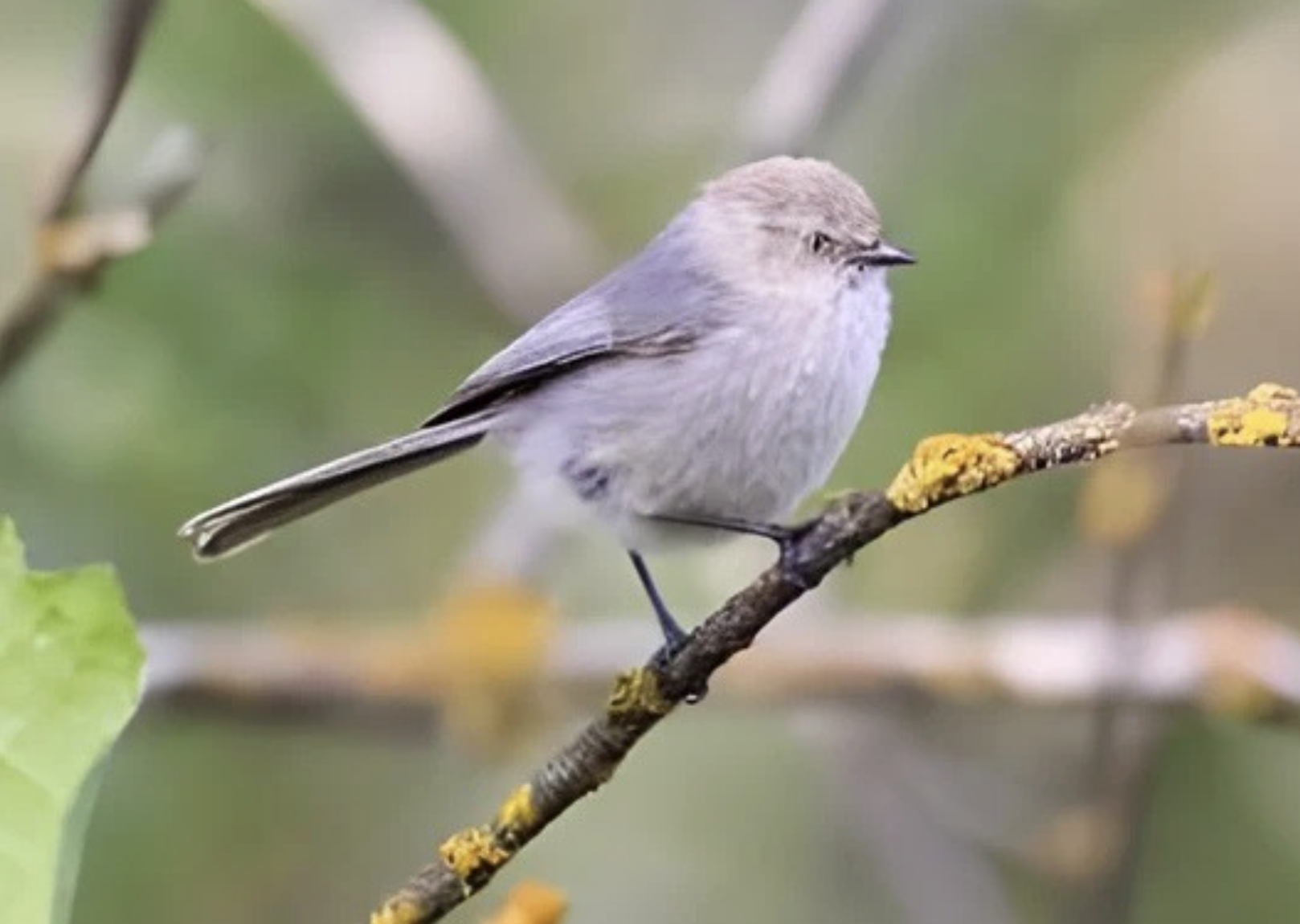
North American Bushtit
Photo Credit – Sacramento Audubon Society
Five years ago, I published an article concerning the British Blue Tit; today’s blog focuses on a similar type of bird called the Bushtit, a species that is found only in North America and one of the few that has “tit” in its title; other birds in North America that use the same term are the five Titmouse species (Oak, Juniper, Tufted, Black-crested, Bridled). These are small, highly active songbirds that resemble small rodents hurrying after food. Bushtit is derived from the Old Icelandic word “tittr” or Norwegian “tita”, describing something small, and “bush” refers to the Bushtit’s preferred habitat. The Old World uses “tit” more widely to describe small songbirds, whereas similar species are called “titmice” or “chickadees” in North America.
Recently, a friend sent me a photo of a Bushtit, wondering what it was. It is a tiny, rather drab-looking bird, about three inches in length, with brown and grey on top and light grey on its breast. It has a small bill and a longish tail. These birds appear in constant motion when searching for food (spiders and insects, and occasionally berries, fruit, and seeds) and make a light ticking or lisping sound. They are highly sociable and form flocks of 10 to 40 individuals outside the nesting season. Human presence does not concern them while they are searching for food.
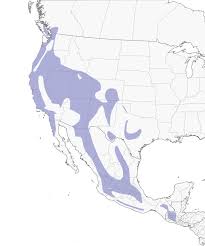
Bushtit Range
Photo Credit – Cornell Lab of Ornithology
Within their geographic range, from Vancouver south through the Great Basin and along the Pacific coast into Mexico and Guatemala, North American Bushtits are common birds, and their population has remained unchanged during the past decades. Bird surveys suggest a global breeding population of 4.3 million, indicating a species of low conservation concern. Typically, they live in open woodland, scrub areas, streamside thickets and evergreen forests. Increasingly, they occupy suburban habitats. They are mostly permanent residents, although those that breed in the foothills and mountains may move to the lowlands for winter. Life span is up to nine years.
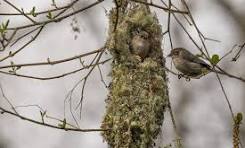
Bushtit Nest
Photo Credit – East Cascades Bird Alliance
Nesting arrangements are unusual and complex. Both males and females construct a hanging nest, which takes up to a month to complete. There is a hole near the top of the nest that hangs below its anchor point, and the construction of the nest uses spider webs and plant materials. Nests are usually located near tree trunks and branches, ranging from one hundred to three hundred feet in height. An unusual feature of Bushtit behavior is that other adults will help in nest building and carry food to the nesting pair. The entire group of birds will sleep together in the hanging nest, moving to sleeping on branches after the young have fledged. The female lays four to ten eggs, and there may be two broods annually.
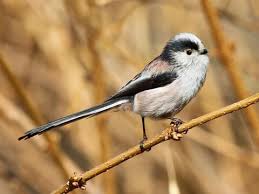
Long-tailed Tit
Photo Credit – Cornell Lab of Ornithology.
While North American bushtits do not appear in Eurasia, there are 12 related species in the Aegithalidae bird family. All are small titmice-like birds with medium to long tails. The most widespread (from Britain to Japan) and the most common is the Long-tailed Tit. Their diets are similar; they sometimes demonstrate cooperative breeding with helpers assisting in raising the young. Their nests are intricately woven from cobwebs and lichen and often lined with feathers. They exist in small flocks outside the breeding season.
The species that I became familiar with growing up in Yorkshire, England, was the Long-tailed Tit. My childhood log of birds has me recording Long-tailed Tits at the beginning of the 1960s, along with Blue Tit, Great Tit, Coal Tit, Marsh Tit and Willow Tit. Today, the Long-tailed Tit is present across most of the British Isles except for north Scotland and the Scottish Islands. It is mainly a permanent resident, although a few may migrate for the winter. Growing up, the species was unmistakable to me with their blackish, whiteish and pinkish plumage and long graduated tails. There were times when I found an ovoid-shaped nest hidden among brambles and hawthorn hedges at the side of fields. I received reports that it breeds around York and that birdwatchers had seen flocks during winter.
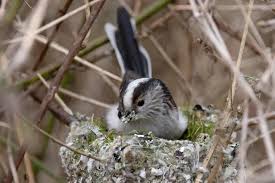
Long-tailed Tit building its nest
Photo Credit – BBC Wildlife Magazine.
Today, the Long-tailed Tit is on the Green List of conservation in the UK and has shown a slight increase in numbers during recent years. There are around 380,000 breeding pairs in the UK, although this number may fluctuate depending on the severity of each winter. Long-tailed Tits are a species easily attracted to bird feeders that offer peanuts and suet.
In summary, here are two small birds, one drab and dreary, and the other cute and richly colored, but both demonstrating similar behaviors. While they are very different birds, they somehow share a link “across the pond” due to their long tails.
Neither is considered to sing: the Long-tailed Tit is said to twitter,
and the Bushtit emits a series of chipping calls



